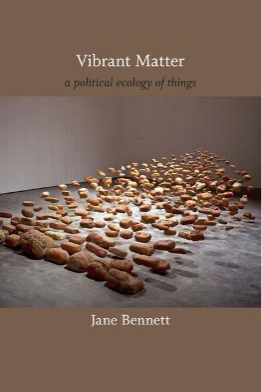
Vibrant Matter: a political ecology of things
Bennett, Jane, Vibrant Matter, Duke University Press, 2010
In Vibrant Matter the political theorist Jane Bennett, renowned for her work on nature, ethics, and affect, shifts her focus from the human experience of things to things themselves. Bennett argues that political theory needs to do a better job of recognizing the active participation of nonhuman forces in events. Toward that end, she theorizes a “vital materiality” that runs through and across bodies, both human and nonhuman. Bennett explores how political analyses of public events might change were we to acknowledge that agency always emerges as the effect of ad hoc configurations of human and nonhuman forces. She suggests that recognizing that agency is distributed this way, and is not solely the province of humans, might spur the cultivation of a more responsible, ecologically sound politics: a politics less devoted to blaming and condemning individuals than to discerning the web of forces affecting situations and events.
Link
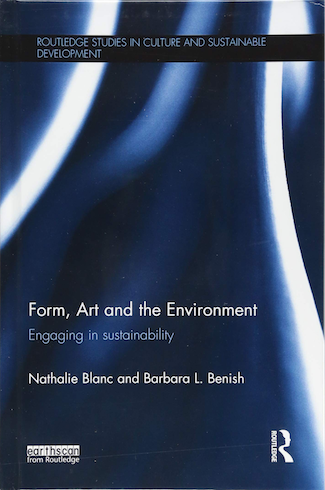
Form, Art and the Environment: Engaging in Sustainability
Blanc, Nathalie and Benish Barbara (eds.) Form, Art and the Environment, Routledge, 2017
Form, Art and the Environment: Engaging in Sustainability adopts a pluralistic perspective of environmental artistic processes in order to examine the contributions of the arts in promoting sustainable development and culture at a grassroots level and its potential as a catalyst for social change and awareness.
Link
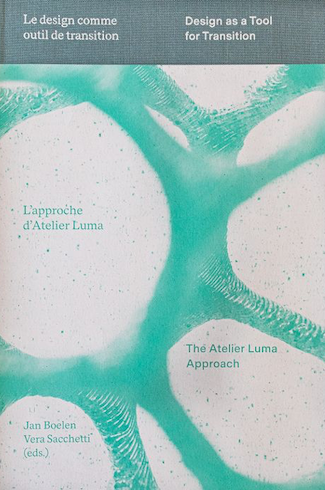
Design as a Tool for Transition — The Atelier Luma Approach
Boelen Jan and Sacchetti, Vera (eds.) Design as a Tool for Transition — The Atelier Luma Approach, Luma Arles, 2019
Atelier LUMA is a laboratory that charts the Mediterranean community of Arles, in the Camargue wetlands region, as a work site for design and production and as a resource for creatives ideas and collective intelligence.
The initiative tests out new ways of making, thinking and designing and claims new roles and responsibilites for design in the 21st century. With this publication, Atelier LUMA aims to kickstart conversations, change minds and create richer and more abundant opportunities for collaboration.
Link
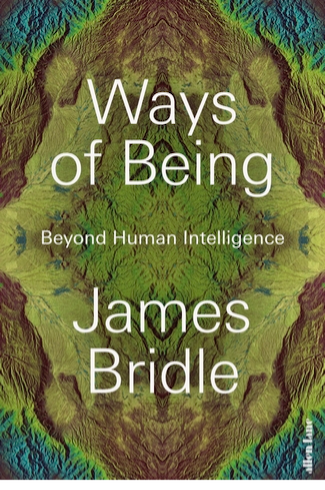
Ways of Being: Beyond Human Intelligence
Bridle, James, Ways of Being: Beyond Human Intelligence, Penguin Random House, 2022.
What does it mean to be intelligent? Is it something unique to humans or shared with other beings— beings of flesh, wood, stone, and silicon? The last few years have seen rapid advances in “artificial” intelligence. But rather than a friend or companion, AI increasingly appears to be something stranger than we ever imagined, an alien invention that threatens to decenter and supplant us.
Link
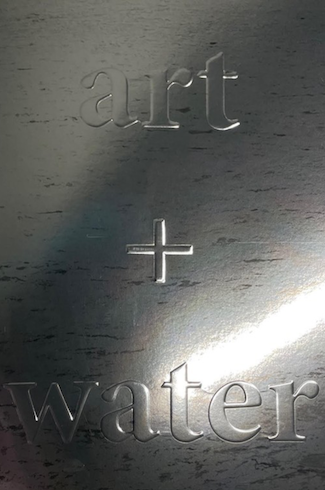
Art + Water
Brouwer, Joke; Altena, Arie & Debackere, Boris, (eds.), V2_Lab for the Unstable Media, 2022
We lack a sustainable approach towards water and a well-balanced relationship with the natural world of seas and oceans. Combined with the impact of climate change, water issues create enormous global challenges that require systemic change. To systematically transform how water is valued across business practices, policies, cultural beliefs and behaviors, we must ad- dress social attitudes to keep us and the environment healthy.
The book Art + Water provides imaginative new ideas on water issues and invites us to rethink and reinvent our society. Five essays and ten texts highlighting the artistic projects developed as part of the EC-funded STARTS4Water program provide a fascinating overview of cultural and artistic approaches to urgent water challenges.
Link
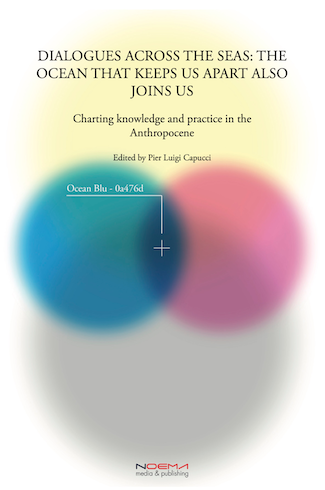
Dialogues across the seas: the ocean that keeps us apart also joins us. Charting knowledge and practice in the Anthropocene
Capucci, Pier Luigi (ed.) Dialogues across the seas: the ocean that keeps us apart also joins us. Charting knowledge and practice in the Anthropocene, Noema, 2022
This publication is about two events on the impact of the climate crisis on the seas and the marine environments. The first one was entitled “From the Mediterranean to the Pacific. Dialogues across the seas”, and took place on July 27-28, 2018, in Cervia, a coastal city nearby Ravenna where the Po Valley ends in the northern Adriatic Sea... The second event was the panel “The ocean that keeps us apart also joins us: charting knowledge and practice in the Anthropocene”, that due to the COVID-19 pandemic took place online at ISEA 2020 “Why Sentience?” on October 14th, 2020, in Montreal.
We are glad to contribute to the discussion on these topics with this publication, whose contents have anticipated those programs thanks to the foresight of the people who participated in the events above and collaborated on this project.
Link
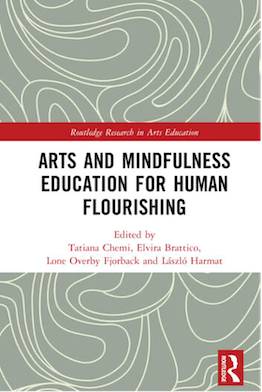
Arts and Mindfulness Education for Human Flourishing
Chemi, Tatiana; Brattico, Elvira; Fjorback, Lone Overby and László Harmat (eds.): Arts and Mindfulness Education for Human Flourishing, Routledge, 2023
This edited volume explores the role of arts and meditation within educational settings, and looks in particular at the preventive and developmental function of the arts in educational contexts through different theoretical perspectives. Encompassing research from an array of disciplines including theatre, psychology, neuroscience, music, psychiatry, and mindfulness, the book draws insights relevant to a broad spectrum of interdisciplinary fields. Chapters are divided into thematic sections, each outlining praxes and emphasising how educating within and through the arts can provide tools for critical thinking, creativity and a sense of agency, consequently fulfilling the need of well-being and contributing towards human flourishing. Ultimately, the book focuses on the role the arts have played in our understanding of physical and mental health, and demonstrates the new-found significance of the discipline in the wake of the COVID-19 pandemic.
With its interdisciplinary and timely nature, this book will be essential reading for scholars, academics, and post-graduate researchers in the field of arts education, creative therapies, neuroscience, psychology, and mindfulness.
Link
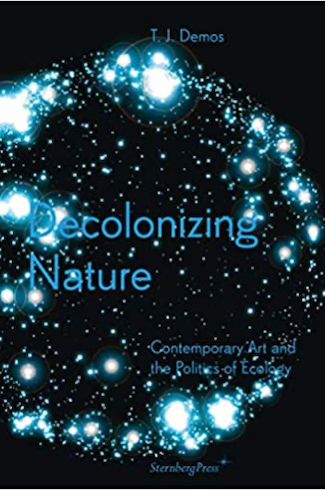
Decolonising Nature
Demos, T. J., Decolonising Nature, Sternberg Press, 2016
While ecology has received little systematic attention within art history, its visibility and significance has grown in relation to the threats of climate change and environmental destruction. By engaging artists' widespread aesthetic and political engagement with environmental conditions and processes around the globe—and looking at cutting-edge theoretical, political, and cultural developments in the Global South and North—Decolonizing Nature offers a significant, original contribution to the intersecting fields of art history, ecology, visual culture, geography, and environmental politics. Art historian T. J. Demos considers the creative proposals of artists and activists for ways of life that bring together ecological sustainability, climate justice, and radical democracy, at a time when such creative proposals are urgently needed.
Link
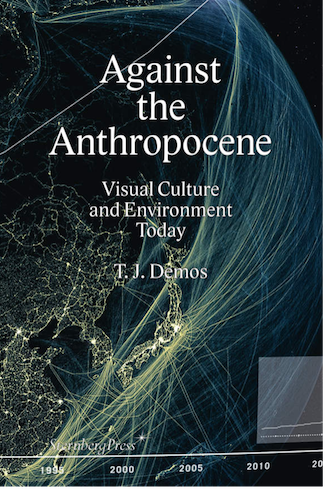
Against the Anthropocene: Visual Culture and Environment Today
Demos, T. J., Against the Anthropocene, Sternberg Press, 2017
Addressing the current upswing of attention in the sciences, arts, and humanities to the new proposal that we are in a human-driven epoch called the Anthropocene, this book critically surveys that thesis and points to its limitations. It analyzes contemporary visual culture—popular science websites, remote sensing and SatNav imagery, eco-activist mobilizations, and experimental artistic projects—to consider how the term proposes more than merely a description of objective geological periodization. This book argues that the Anthropocene terminology works ideologically in support of a neoliberal financialization of nature, anthropocentric political economy, and endorsement of geoengineering as the preferred—but likely disastrous—method of approaching climate change. To democratize decisions about the world’s near future, we urgently need to subject the Anthropocene thesis to critical scrutiny and develop creative alternatives in the present.
Link
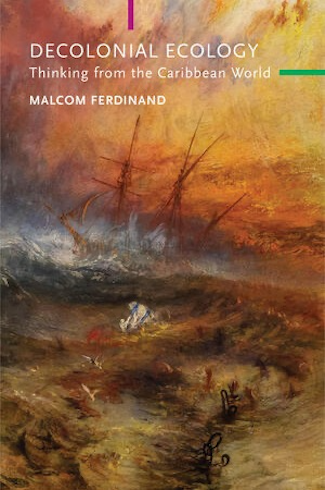
Decolonial Ecology: Thinking from the Caribbean World
Ferdinand, Malcom Decolonial Ecology: Thinking from the Caribbean World, Wiley, 2021
The world is in the midst of a storm that has shaped the history of modernity along a double fracture: on the one hand, an environmental fracture driven by a technocratic and capitalist civilization that led to the ongoing devastation of the Earth’s ecosystems and its human and non-human communities and, on the other, a colonial fracture instilled by Western colonization and imperialism that resulted in racial slavery and the domination of indigenous peoples and women in particular.
In this important new book, Malcom Ferdinand challenges this double fracture, thinking from the Caribbean world. Here, the slave ship reveals the inequalities that continue during the storm: some are shackled inside the hold and even thrown overboard at the first gusts of wind. Drawing on empirical and theoretical work in the Caribbean, Ferdinand conceptualizes a decolonial ecology that holds protecting the environment together with the political struggles against (post)colonial ...
Link
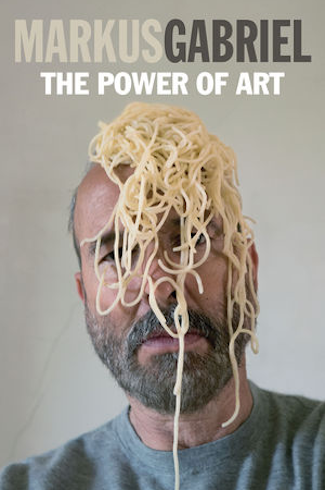
The Power of Art
Gabriel, Marcus: The Power of Art, Wiley, 2020.
In this short book, Markus Gabriel argues that art is essentially uncontrollable. It is in the nature of the work of art to be autonomous to such a degree that the art world will never manage to overpower it. Ever since the cave paintings of Lascaux, art has taken hold of the human mind and implemented itself in our very being. Thanks to the emergence of art we became human beings, that is, beings who lead their lives in light of an image of the human being and its position in the world and in relation to other species. Due to its structural, ontological power, art itself is and remains radically autonomous. Yet, this power is highly ambiguous, as we cannot control its unfolding.
Link
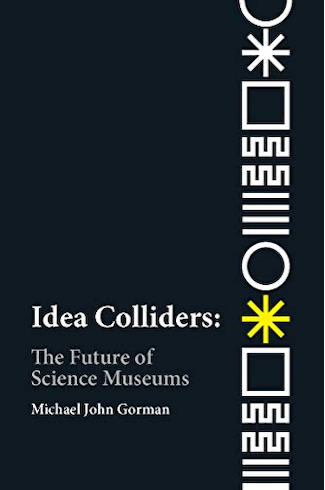
Idea Colliders
Gorman, Michael John, Idea Colliders, MIT Press, 2020
A provocative call for the transformation of science museums into “idea colliders” that spark creative collaborations and connections.
Today's science museums descend from the Kunst-und Wunderkammern of the Renaissance—collectors' private cabinets of curiosities—through the Crystal Palace exhibition of 1851 to today's “interactive” exhibits promising educational fun. In this book, Michael John Gorman issues a provocative call for the transformation of science museums and science centers from institutions dedicated to the transmission of cultural capital to dynamic “idea colliders” that spark creative collaborations and connections. This new kind of science museum would not stage structured tableaux of science facts but would draw scientists into conversation with artists, designers, policymakers, and the public. Rather than insulating visitors from each other with apps and audio guides, the science museum would consider each visitor a resource, bringing questions, ideas, and experiences from a unique perspective.
Link
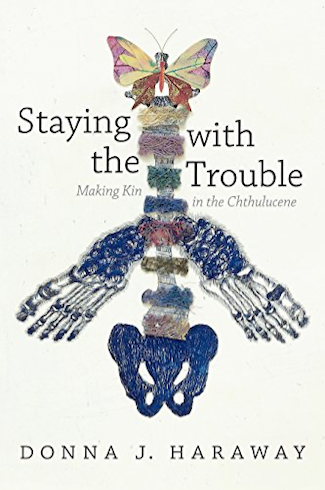
Staying with the Trouble
Haraway, Donna, Staying with the Trouble, Duke University Press, 2016
In the midst of spiraling ecological devastation, multispecies feminist theorist Donna J. Haraway offers provocative new ways to reconfigure our relations to the earth and all its inhabitants. She eschews referring to our current epoch as the Anthropocene, preferring to conceptualize it as what she calls the Chthulucene, as it more aptly and fully describes our epoch as one in which the human and nonhuman are inextricably linked in tentacular practices. The Chthulucene, Haraway explains, requires sym-poiesis, or making-with, rather than auto-poiesis, or self-making. Learning to stay with the trouble of living and dying together on a damaged earth will prove more conducive to the kind of thinking that would provide the means to building more livable futures. Theoretically and methodologically driven by the signifier SF—string figures, science fact, science fiction, speculative feminism, speculative fabulation, so far—Staying with the Trouble further cements Haraway's reputation as one of the most daring and original thinkers of our time
Link
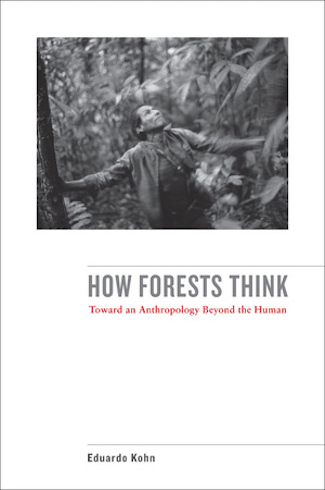
How Forests Think
Kohn, Eduardo, How Forests Think, University of California Press, 2013
Can forests think? Do dogs dream? In this astonishing book, Eduardo Kohn challenges the very foundations of anthropology, calling into question our central assumptions about what it means to be human—and thus distinct from all other life forms. Based on four years of fieldwork among the Runa of Ecuador’s Upper Amazon, Eduardo Kohn draws on his rich ethnography to explore how Amazonians interact with the many creatures that inhabit one of the world’s most complex ecosystems. Whether or not we recognize it, our anthropological tools hinge on those capacities that make us distinctly human. However, when we turn our ethnographic attention to how we relate to other kinds of beings, these tools (which have the effect of divorcing us from the rest of the world) break down. How Forests Think seizes on this breakdown as an opportunity. Avoiding reductionistic solutions, and without losing sight of how our lives and those of others are caught up in the moral webs we humans spin, this book skillfully fashions new kinds of...
Link
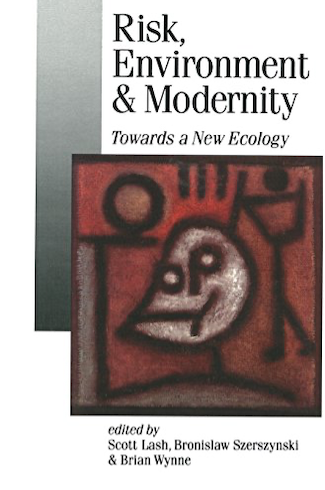
Risk, Environment and Modernity: Towards a New Ecology
Lash S., Szerszynski B. and B. Wynne, Risk, Environment and Modernity: Towards a New Ecology, SAGE publications, 2012
This wide-ranging and accessible contribution to the study of risk, ecology and environment helps us to understand the politics of ecology and the place of social theory in making sense of environmental issues. The book provides insights into the complex dynamics of change in `risk societies'.
Link
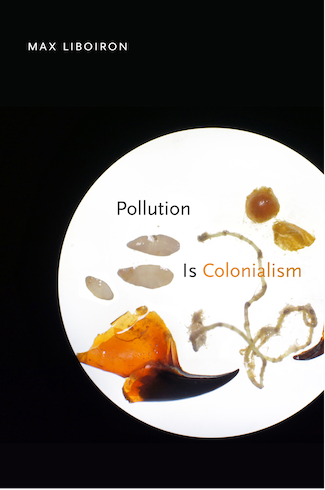
Pollution is Colonialism
Liboiron, Max: Pollution is Colonialism, Duke University Press, 2021.
Max Liboiron presents a framework for understanding scientific research methods as practices that can align with or against colonialism. They point out that even when researchers are working toward benevolent goals, environmental science and activism are often premised on a colonial worldview and access to land. Focusing on plastic pollution, the book models an anticolonial scientific practice aligned with Indigenous, particularly Métis, concepts of land, ethics, and relations. Liboiron draws on their work in the Civic Laboratory for Environmental Action Research (CLEAR)—an anticolonial science laboratory in Newfoundland, Canada—to illuminate how pollution is not a symptom of capitalism but a violent enactment of colonial land relations that claim access to Indigenous land. Liboiron's creative, lively, and passionate text refuses theories of pollution that make Indigenous land available for settler and colonial goals. In this way, their methodology demonstrates that anticolonial science is not only possible but is currently being practiced in ways that enact more ethical modes of being in the world.
Link
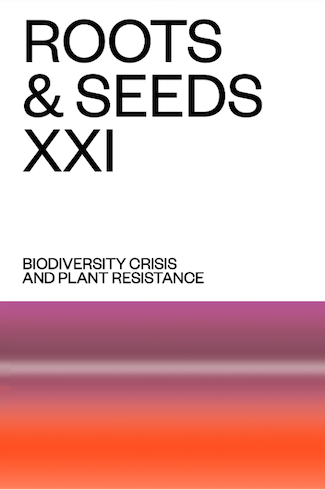
Roots and Seeds XXI: Biodiversity Crisis and Plant Resistance
Nacenta, Lluís and Claudia Schnugg (authors). In the frame of Creative Europe Project Roots & Seeds XXI. Biodiversity Crisis and Plant Resistance. 2021 Drawings: Pedro Strukelj
With this project, we sustain that by using Art and Science practices, approaches, techniques and aesthetics we can develop passion and emotional connection for sustainable organizing and living, and promote habits that take care of our environment and specifically our plants, contributing to our botanical literacy.
Roots & Seeds XXI has come to life in a series of interactive, transdisciplinary tools, activities and outcomes that have allowed us to reimagine our relationship with botany, and rethink how we relate to each other and the environment.
This volume constitutes the final publication of Roots & Seeds XXI, serving both as testimony and as artistic object to be interacted with, played with, and cherished in personal and public collections. A bridge that will continue to generate interdisciplinary, international and intergenerational alliances.
Link to full text
More info
Roots & Seeds XXI. Biodiversity Crisis and Plant Resistance is an international cooperation project between Ars Electronica (AT), Leonardo-OLATS (FR), University of Barcelona (ES) and Quo Artis (ES) as lead partner, co-funded by the Creative Europe Programme of the European Union and developed between October 2020 and September 2022.
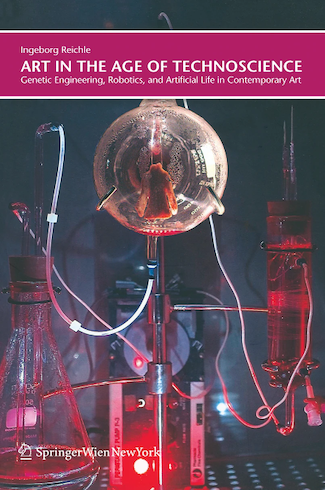
Art in the Age of Technoscience
Reichle, Ingeborg Art in the Age of Technoscience, Springer-Verlag Vienna, 2009
Art, the Life Sciences, and the Humanities: In Search of a Relationship Robert Ztuijnenberg Over the last decades there has been a distinctive effort in the arts to engage with science through participation in the actual practice of science. ' Exchange projects between artists and scientists, such as artist-in-lab projects, have become common and a large number of organizations have emerged that stimulate and initiate collaboration between artists and scientists. ' Research funding organizations in the humanities, such as the British Arts and Humanities Research Council (AHRC) and the Netherlands Organisation for Scientific Research (NWO), have also initiated all sorts of research programs that explore and support inter actions between art and science. ' As a result, artists have grown more involved with scientific concerns and practices, and their increased interactions with scientists have also become a subject of study within the humanities. Why do artists openly seek to gain access to the domain of the sciences? And why do scholars in the humanities value collaboration between artists and scientists so much that they are willing to spend research time and money on it? This interest in science, I argue in this preface for Ingeborg Reichle's book Art in the Age of Technoscience,' underscores that the arts and the humanities are searching to establish a new relationship with the natural sciences as well as with each other. Art and Science The relationship between the arts and the sciences has been subject to permanent change over the past two centuries.
Link
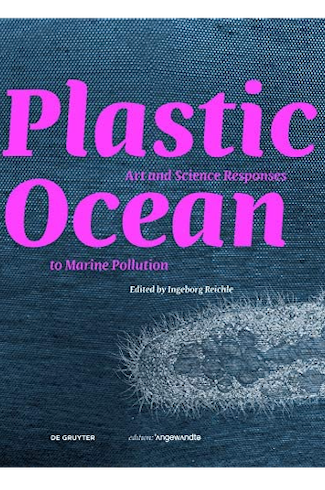
Plastic Ocean: Art and Science Responses to Marine Pollution
Reichle, Ingeborg. Plastic Ocean: Art and Science Responses to Marine Pollution, Berlin, Boston: De Gruyter, 2021. https://doi.org/10.1515/9783110744774
Our oceans are in an ecological crisis due to their contamination with millions of tons of toxic microplastic particles. In just a few years, the volume of microplastic particles will exceed that of plankton in our oceans and turn them into a huge sea of plastic.
This publication brings together numerous international art projects related to environmental activities, DIY biotechnology, and science, and draws attention to the irreversible destruction of our marine ecosystems – the current threat posed by the loss of marine animal biodiversity, for example, or the decline in oxygen production due to massive plankton loss. It also presents current scientific findings on sustainable alternatives to plastic.
Link
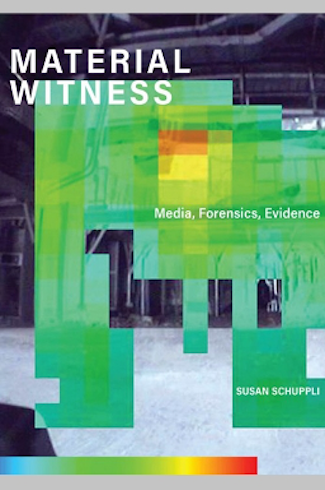
Material Witness
Schuppli, Susan, Material Witness, MIT Press, 2020
In this book, Susan Schuppli introduces a new operative concept: material witness, an exploration of the evidential role of matter as both registering external events and exposing the practices and procedures that enable matter to bear witness. Organized in the format of a trial, Material Witness moves through a series of cases that provide insight into the ways in which materials become contested agents of dispute around which stake holders gather. These cases include an extraordinary videotape documenting the massacre at Izbica, Kosovo, used as war crimes evidence against Slobodan Milošević; the telephonic transmission of an iconic photograph of a South Vietnamese girl fleeing an accidental napalm attack; radioactive contamination discovered in Canada's coastal waters five years after the accident at Fukushima Daiichi; and the ecological media or “disaster film” produced by the Deep Water Horizon oil spill in the Gulf of Mexico. Each highlights the degree to which a rearrangement of matter exposes the contingency of witnessing, raising questions about what can be known in relationship to that which is seen or sensed, about who or what is able to bestow meaning onto things, and about whose stories will be heeded or dismissed.
Link
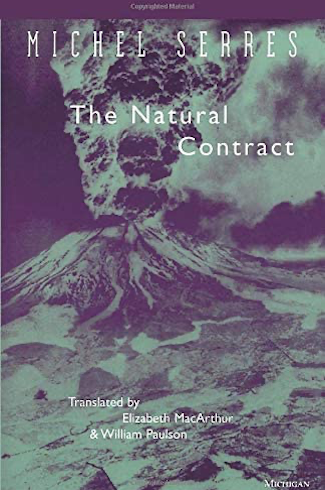
The Natural Contract
Serres, Michel, The Natural Contract, University of Michigan Press, 1995
Global environmental change, argues Michel Serres, has forced us to reconsider our relationship to nature. In this translation of his influential 1990 book Le Contrat Naturel, Serres calls for a natural contract to be negotiated between Earth and its inhabitants.
Tracing the ancient beginnings of modernity, Serres examines the origins and possibilities of a natural contract through an extended meditation on the contractual foundations of law and science. By invoking a nonhuman, physical world, Serres asserts, science frees us from the oppressive confines of a purely social existence, but threatens to become a totalitarian order in its own right. The new legislator of the natural contract must bring science and law into balance.
Link
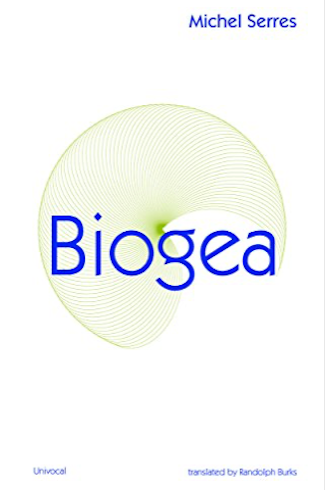
Biogea
Serres, Michel, Biogea, Univocal Publishing, 2012
Biogea is a mixture of poetry, philosophy, science, and biography exemplary of the style that has made Michel Serres one of the most extraordinary thinkers of his age. His philosophical and poetic inquiry sings in praise of earth and life, what he names singularly as Biogea.
Link
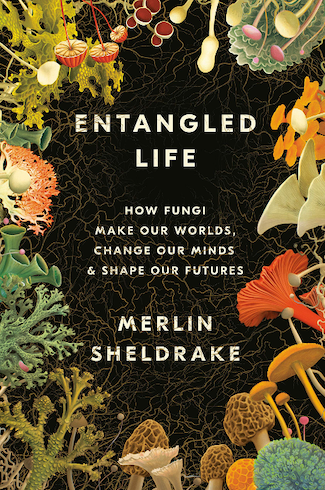
Entangled Life
Sheldrake, Merlin, Entangled life, Random House Trade Paperbacks. 2021
When we think of fungi, we probably think of mushrooms. But mushrooms are only fruiting bodies, analogous to apples on a tree. Most fungi live out of sight, yet make up a massively diverse kingdom of organisms that support and sustain nearly all living systems. The more we learn about fungi, the less makes sense without them.
Sheldrake’s mind-bending journey into this hidden world ranges from yeast to psychedelics, to the fungi that sprawl for miles underground and are the largest organisms on the planet, to those that link plants together in complex networks known as the ‘Wood Wide Web’, to those that infiltrate and manipulate insect bodies with devastating precision.
Fungi throw our concepts of individuality and even intelligence into question. They can change our minds, heal our bodies, and even help us remediate environmental disaster. By examining fungi on their own terms, Sheldrake reveals how these extraordinary organisms – and our relationships with them – are changing our understanding of how life works.
Link
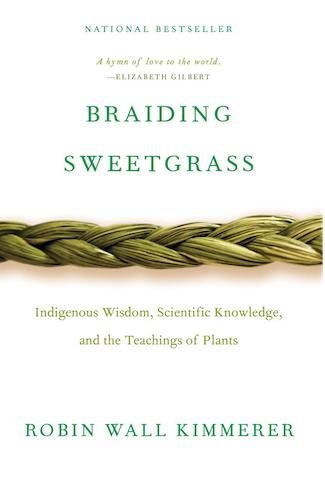
Braiding Sweetgrass
Wall Kimmerer, Robin, Braiding Sweetgrass, Milkweed 2015
Drawing on her life as an indigenous scientist, a mother, and a woman, Kimmerer shows how other living beings—asters and goldenrod, strawberries and squash, salamanders, algae, and sweetgrass—offer us gifts and lessons, even if we’ve forgotten how to hear their voices. In a rich braid of reflections that range from the creation of Turtle Island to the forces that threaten its flourishing today, she circles toward a central argument: that the awakening of a wider ecological consciousness requires the acknowledgment and celebration of our reciprocal relationship with the rest of the living world. For only when we can hear the languages of other beings will we be capable of understanding the generosity of the earth, and learn to give our own gifts in return.
